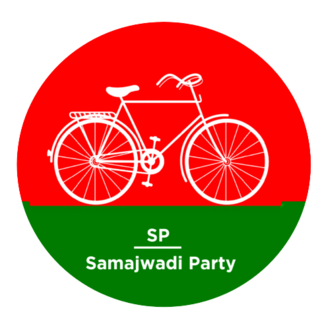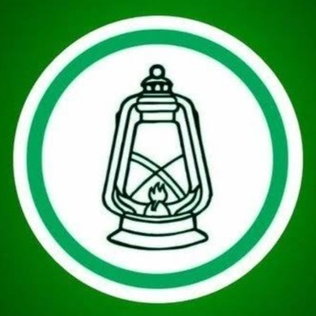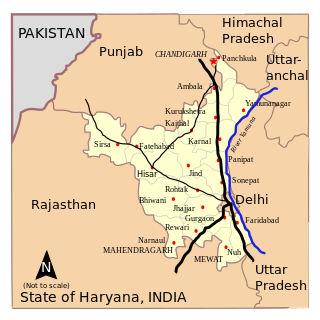Politics of India | |
|---|---|
 | |
| Polity type | Federal Parliamentary Republic |
| Constitution | Constitution of India |
| Legislative branch | |
| Name | Parliament |
| Type | Bicameral |
| Meeting place | Sansad Bhavan |
| Upper house | |
| Name | Rajya Sabha |
| Presiding officer | Vice President Jagdeep Dhankhar, Chairman of the Rajya Sabha |
| Appointer | Electoral College |
| Lower house | |
| Name | Lok Sabha |
| Presiding officer | Om Birla, Speaker of the Lok Sabha |
| Executive branch | |
| Head of State | |
| Title | President |
| Currently | Draupadi Murmu |
| Appointer | Electoral College |
| Head of Government | |
| Title | Prime Minister |
| Currently | Narendra Modi |
| Appointer | President |
| Cabinet | |
| Name | Union Council of Ministers |
| Current cabinet | Second Modi ministry |
| Leader | Prime Minister |
| Appointer | President |
| Ministries | 52 |
| Judicial branch | |
| Name | Judiciary |
| Supreme Court | |
| Chief judge | Dhananjaya Y. Chandrachud |
| This article is part of a series on the |
| Politics of India |
|---|
 |
Politics of India works within the framework of the country's Constitution. India is a parliamentary secular democratic republic in which the president of India is the head of state & first citizen of India and the Prime Minister of India is the head of government. It is based on the federal structure of government, although the word is not used in the Constitution itself. India follows the dual polity system, i.e. federal in nature, that consists of the central authority at the centre and states at the periphery. The Constitution defines the organizational powers and limitations of both central and state governments; it is well recognised, fluid (Preamble of the Constitution being rigid and to dictate further amendments to the Constitution) and considered supreme, i.e. the laws of the nation must conform to it.
Contents
- Union Government
- Lok Sabha
- Rajya Sabha
- State Governments
- Vidhan Sabha
- Vidhan Parishad
- Local Governments
- Political parties and alliances
- Types of political parties
- Party proliferation
- Alliances
- Corruption
- Candidate selection
- Political issues
- Law and order
- State of democracy
- High political offices in India
- President of India
- Vice President of India
- The Prime Minister and the Union Council of Ministers
- Political families
- See also
- References
- Bibliography
- Further reading
- External links
There is a provision for a bicameral legislature consisting of an upper house, the Rajya Sabha (Council of States), which represents the states of the Indian federation, and a lower house, the Lok Sabha (House of the People), which represents the people of India as a whole. The Constitution provides for an independent judiciary, which is headed by the Supreme Court. The court's mandate is to protect the Constitution, to settle disputes between the central government and the states, to settle inter-state disputes, to nullify any central or state laws that go against the Constitution and to protect the fundamental rights of citizens, issuing writs for their enforcement in cases of violation. [1]
There are 543 members in the Lok Sabha, who are elected using plurality voting (first past the post) system from 543 Single-member district. There are 245 members in the Rajya Sabha, out of which 233 are elected through indirect elections by single transferable vote by the members of the state legislative assemblies; 12 other members are elected/nominated by the President of India. Governments are formed through elections held every five years (unless otherwise specified), by parties that secure a majority of members in their respective lower houses (Lok Sabha in the central government and Vidhan Sabha in states). India had its first general election in 1951, which was won by the Indian National Congress, a political party that went on to dominate subsequent elections until 1977, when a non-Congress government was formed for the first time in independent India. The 1990s saw the end of single-party domination and the rise of coalition governments. The latest 17th Lok Sabha elections was conducted in seven phases from 11 April 2019 to 19 May 2019 by the Election commission of India. That elections once again brought back single-party rule in the country, with the Bharatiya Janata Party (BJP) being able to claim a majority in the Lok Sabha. [2]
In recent decades, Indian politics has become a dynastic affair. [3] Possible reasons for this could be the party stability, absence of party organisations, independent civil society associations that mobilise support for the parties and centralised financing of elections. [4] According to the V-Dem Democracy indices India in 2023 was the 19th most electoral democratic country in Asia. [5]





















